Could Solar Help NC Go ‘Clean’ by 2050?
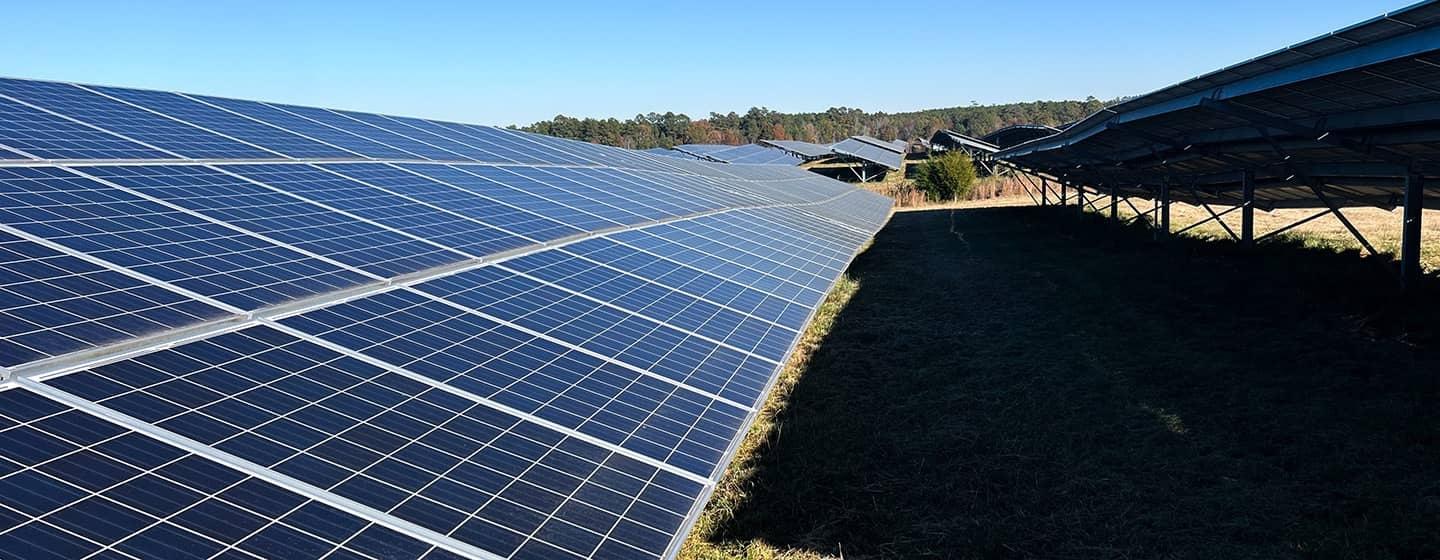

State of Change producer Michelle Lotker sat down with Steve Kalland, executive director of NC State’s NC Clean Energy Technology Center, to talk about solar energy production in North Carolina, how it can work alongside agriculture and the future.
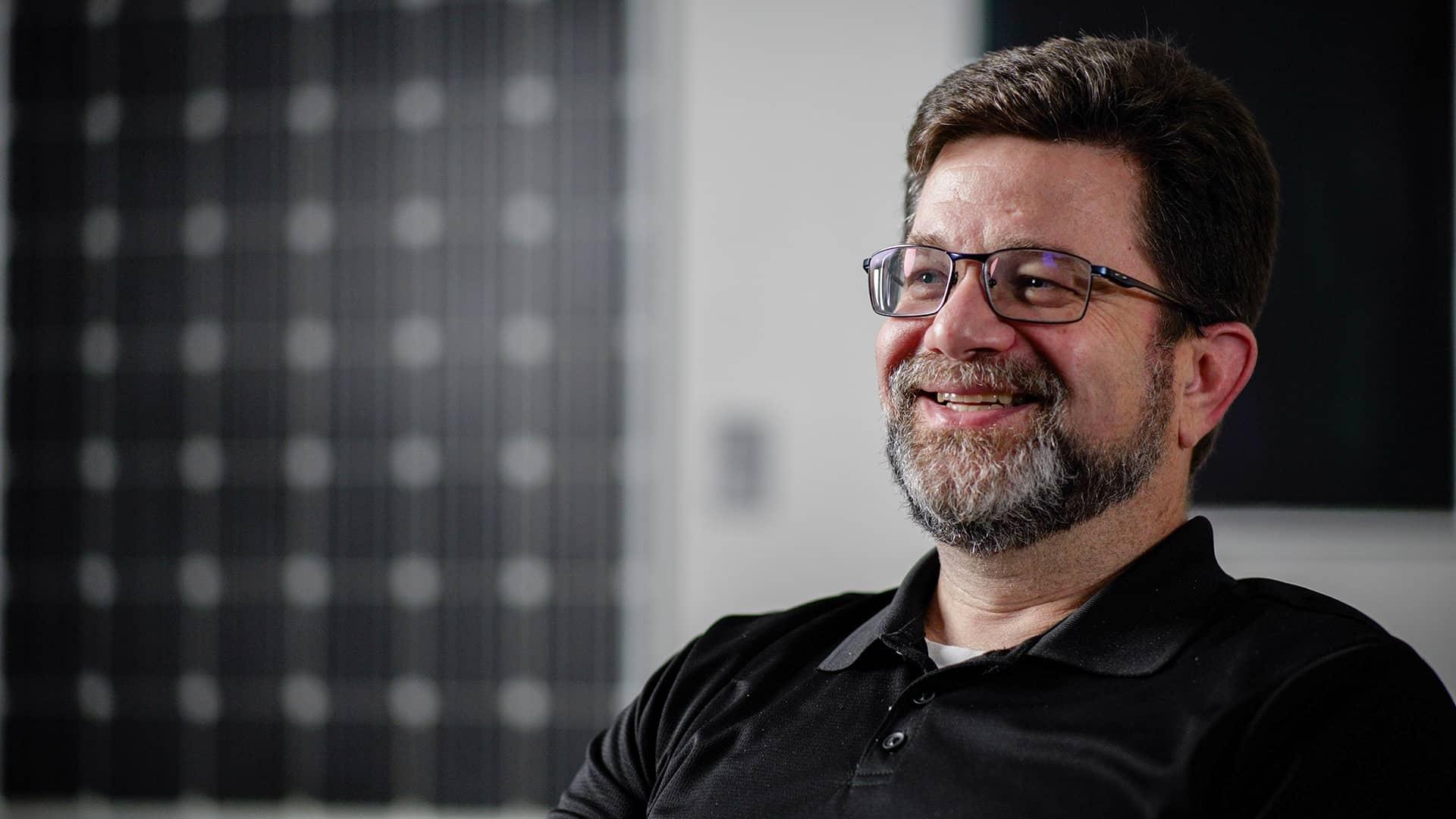
Note: This interview has been edited for length and clarity.
Michelle Lotker: What is clean energy?
Steve Kalland: There is no one definition. But in general, we’re talking about energy from carbon-free sources or energy that is conscious of trying to capture the carbon associated with that and not allowing it to be released into the environment.
For the NC Clean Energy Technology Center, our focus is really on carbon-free technologies and the avoidance of energy [use] altogether in the energy-efficiency side. The cleanest energy you could possibly have is the energy you didn’t use in the first place.
Michelle Lotker: How do solar and agricultural production overlap and interact?
Steve Kalland: Historically, with solar development, you want to find land that is not expensive, is preferably already cleared and doesn’t have a mountain in the middle of it. That has pointed solar development to rural areas in the east [eastern NC], where we have a lot of flat agricultural and underutilized land.
In the early days of solar in North Carolina, when we were doing these smaller systems, the model was, if you’ve got a big farm, maybe you want a steady revenue stream from solar because the revenue from agriculture can be erratic. Hurricanes and other things damage crops or injure animals. Then you have uncertainty in your own revenue to operate your farm.
The nice thing about solar is you lease out your land, and you’re usually signing an agreement for 20 years. You’ve got a steady stream of revenue that comes from that project, and that stabilizes the finances of farms and gives the ability for those folks to continue farming the rest of their property.
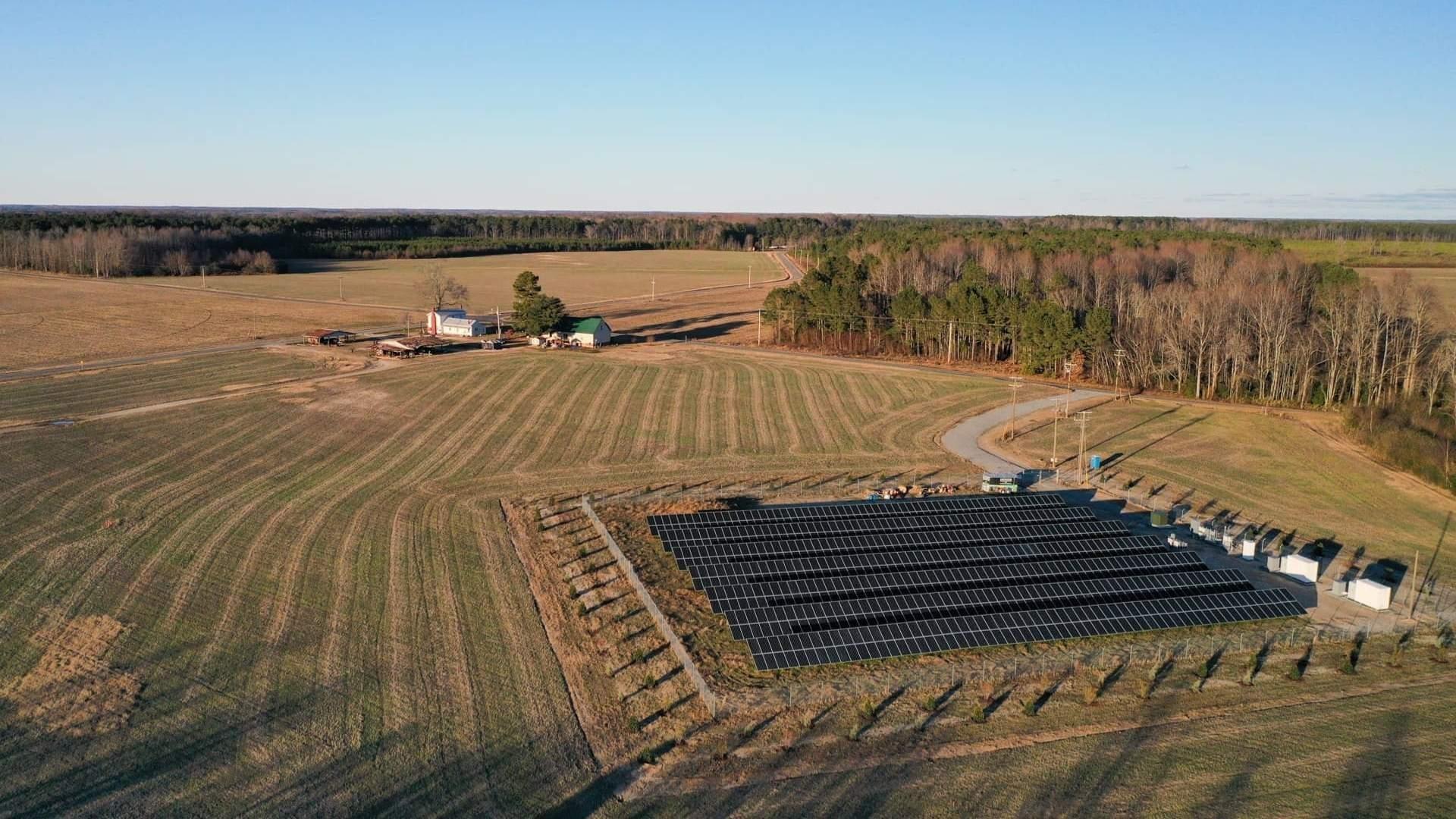
It’s a little different now because the systems have gotten so much larger. We still see that model in places, but we also see entire farms getting taken up by solar panels. We’re trying to figure out how to put those factors together to make sure we’re picking the optimal land to do solar and still do agriculture as well.
One of the big things that’s fallen out of that is a new subfield of solar called agrivoltaics. It’s photovoltaics—solar electricity technology—and agriculture working together in a way that supports each other.
In North Carolina, the first conversations around agrivoltaics were around pollinator habitats. We saw discussion led by groups like the Nature Conservancy and the NC Wildlife Federation where they saw lots of growth between [solar] modules and around solar farms and said, “Well, if we planted that in native pollinator habitat, that might be really beneficial.” That pollinator discussion has been great because I think it has gotten the solar industry to start thinking more about their impacts on their surroundings.
The next piece of the conversation that started to emerge was grazing animals. We have entire companies in North Carolina basically in charge of maintaining the vegetation and site for a solar project. Several of these companies have now diversified into having sheep on their team.
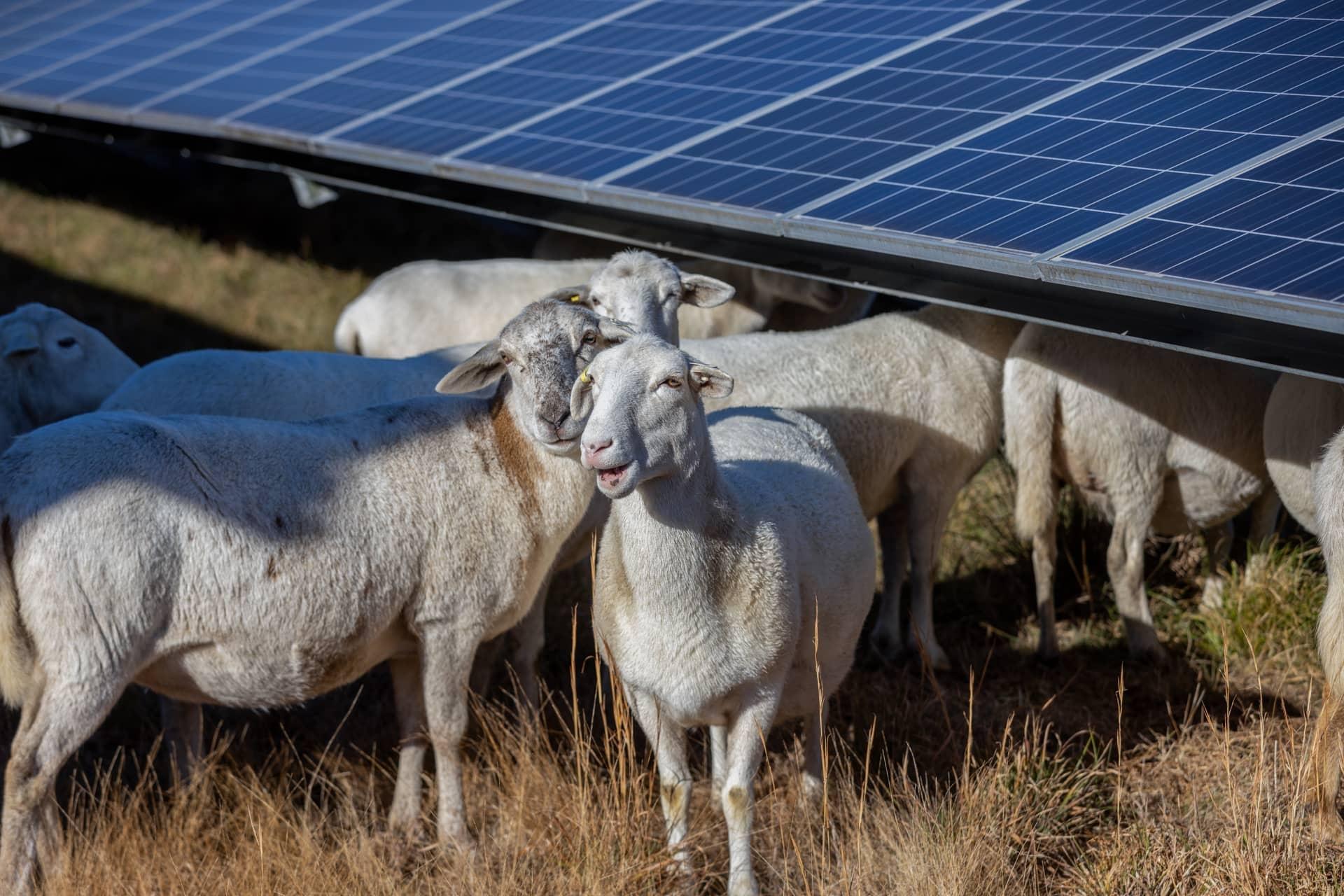
Basically, they have a specialist in charge of bringing the sheep to the site. They fence off specific sections, and let the sheep graze it down to an appropriate level. Then they open the gate, moving to the next section, and fence that off. By using a systematic process like that using these animals, you can take a big chunk out of maintenance that would otherwise be done with a gasoline-powered lawn mower. That has attracted a lot of interest from the grazing industry.
We’re seeing that interest around the country. I think the issue with its growth has been that it’s been focused on sheep so far, but we’re kind of a beef cattle country. We have to grow the market for sheep, and we’re starting to look at how we can bring in cattle to do a similar kind of grazing in these projects.
The third part of agrivoltaics is kind of the holy grail, which is to grow crops. It’s challenging to grow crops in a solar project though.
With solar, you’ve got posts in the ground and modules that run along those posts. It’s hard to get underneath them with crops. We’ve seen some projects where folks are doing that, but they’re doing it with things like berries or small plots of herbs. But you still have issues with harvesting.
We’ve started to see projects in other parts of the country experimenting with different ways of doing modules. Some ways are to raise the modules higher on the post so you can get underneath them more easily. But increasingly, we see panels that are trackers and move throughout the day. A farm might have panels on trackers, and when it’s time to run equipment through, we just put them all up and run down the middle. Those things are being looked at from an agrivoltaics standpoint so we could have even more compatibility with the agricultural sector.
Michelle Lotker: Are there benefits to adding solar installations to agricultural land?
Steve Kalland: There’s research on whether there’s actually a benefit to the soil from the long-term installation of a solar installation. Basically, you’re going to rest the soil from agriculture for a while and allow carbon to build up in that soil. There’s some school of thought being researched by folks like the National Renewable Energy Laboratory that we may see carbon soil benefit from a solar project.
Michelle Lotker: How does installing solar on land differ from developing it?
Steve Kalland: There is a lot of controversy around the country about the loss of farmland to development. When you talk about big box stores or subdivisions going on that land, that land is lost. It is no longer going to be farmland. With solar, it’s a little bit different because you can remove that solar project from that land 20 years from now and go back to an agricultural use for that land. When that project runs its course, it might get repowered and turn into the next generation of solar project, but it might also get turned into agricultural land again.
Michelle Lotker: Why should we have more solar here in North Carolina?
Steve Kalland: We should always be looking to change the way we do energy in ways that are beneficial for our environment and the planet as a whole. Climate change is a real problem. Renewable energy and solar energy—these are potential solutions that reduce that carbon output from our power sector.
North Carolina has a lot of “ag” [agricultural] land. Even with all the solar we have in North Carolina, it is a very small percentage of the total land and the ag land in the state, so we’re not really displacing anything.
We are finding ways to displace the carbon output of the state but not displace other land uses.
But the reality is this is a state that historically had very dirty power, and it has gotten a lot cleaner. That is partially because of solar, partially because we do a lot of nuclear, partially because we’re looking at new resources like offshore wind. We have a requirement for the state to get to 100% decarbonized power by 2050 in House Bill 951. There’s a lot of opportunity to do that here. A significant percentage of our state’s energy is already coming from solar, and we can use more of it.
A new technology that’s going to make solar much more feasible for grid interaction is energy storage technology. This can be batteries, this can be flywheels, this can be a number of different things that are being looked at for larger-scale energy storage.
But as we get better batteries and other storage technologies, we can take sun during the day and store it and use it at night. Maybe eventually we get seasonal storage where you could take the sun generated in the summertime, and when it rains nonstop in the late fall or early spring, you could take some of that energy and supplement the grid.
Those are the next steps in technology generation, combined with infrastructure needed to move the power back and forth, that are going to really open the door to even more renewable energy in North Carolina and all over the country.
Michelle Lotker: North Carolina is growing and changing with tech companies coming in, and more electric vehicles are going to demand more power. Why is it important as our electrical demand grows to focus on technologies like solar?
Steve Kalland: One of the big tensions in this whole conversation around decarbonization is that while we’re trying to create more clean energy, our need for energy is also escalating. There’s this conversation around AI [artificial intelligence] and big data centers that are going to be needed to drive that process. There are all kinds of new manufacturing that’s starting to come into the U.S. We’ve seen a real influx of manufacturing facilities, particularly in the clean energy space.
We’ve got companies coming into the state that are going to be producing clean energy technologies. But we’ve got a lot of other manufacturing, biotech and other technology areas. All these companies are demanding energy.
Many of these companies have goals themselves about wanting to utilize clean energy. They want to tell their shareholders that their company is not contributing to these problems but is part of the solution.
Some companies wind up putting solar at their facility. SAS Institute in Cary has a solar project on their campus partially to do that. RTI International recently installed a solar facility on one of their carports that’s going to supply some of the energy for one of their buildings. We’re going to see more corporations that are interested in providing their own energy from solar directly.
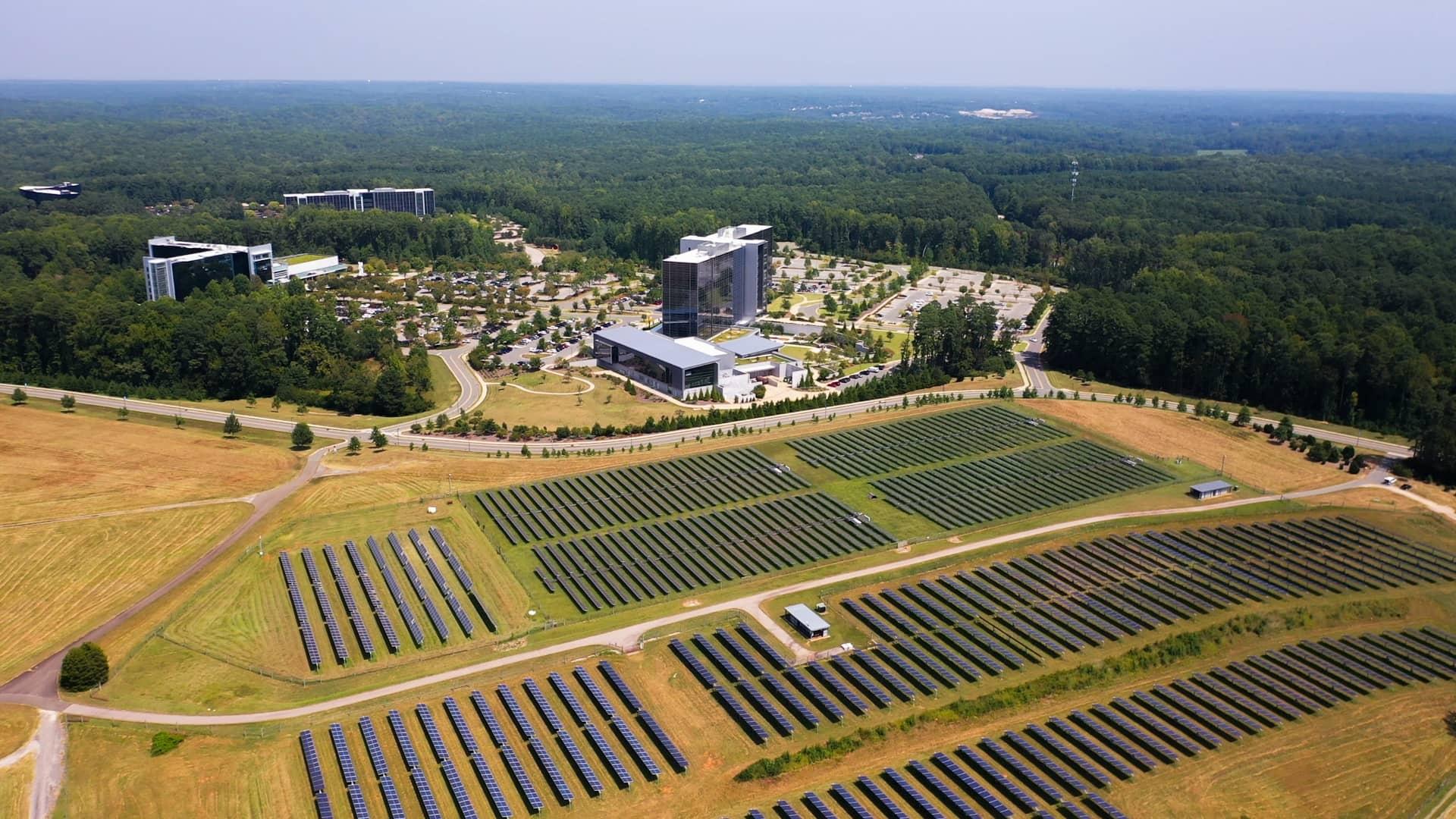
We’re going to see more interest from other companies that maybe aren’t in a situation to do that in their own building, but they want to buy electricity from their utility that’s green.
We have a state law that says we have to be 100% clean by 2050. But if companies come in and say they want it sooner, we might get to it by 2045 or 2040. It’s all a matter of, “Can we set up a market that’s going to allow those companies to obtain the kind of energy that they want?”
Michelle Lotker: That makes me feel excited and hopeful because it seems like there’s a lot of different things that are going to drive a shift in how we generate electricity.
Steve Kalland: The nice thing about clean energy is that everybody wants it. They might be opposed to what they perceive as being more costly. But in general, everybody wants a good environment. Everybody wants to breathe clean air. Everybody wants it to be less hot in the summertime around here. Clean energy in general is pretty universally supported.
We have issues that we have to face to make clean energy ubiquitous in North Carolina. But we have pretty good consensus from everybody that we’d like to figure it out.
Michelle Lotker: What’s happening that we should be looking for going into the future in North Carolina with solar energy?
Steve Kalland: I think that North Carolina faces a really bright future, no pun intended, for solar energy because of this requirement that we’ve got to go to 100% decarbonized power grid. What makes that particularly impactful is that not only is it going to be today’s power grid, but it’s tomorrow’s power grid, where we’re moving to electric vehicles. We’re not only decarbonizing electricity, but we’re decarbonizing the transportation sector at the same time.
We’re going to see a massive opportunity to use technologies like this to achieve that goal. North Carolina has a lot of places where we can do that.
The great thing about solar energy and related technologies is that they’re different than building a big central station power plant where there’s a project and the costs escalate. The more you build, the cheaper it gets.
We have the opportunity to make electricity less expensive and our environment much cleaner and help fight climate change by doing more of these technologies. North Carolina’s well-situated to be a real contributor to that nationally and internationally.
Sheep and solar panels work hand in hand to generate enough power for a small town.
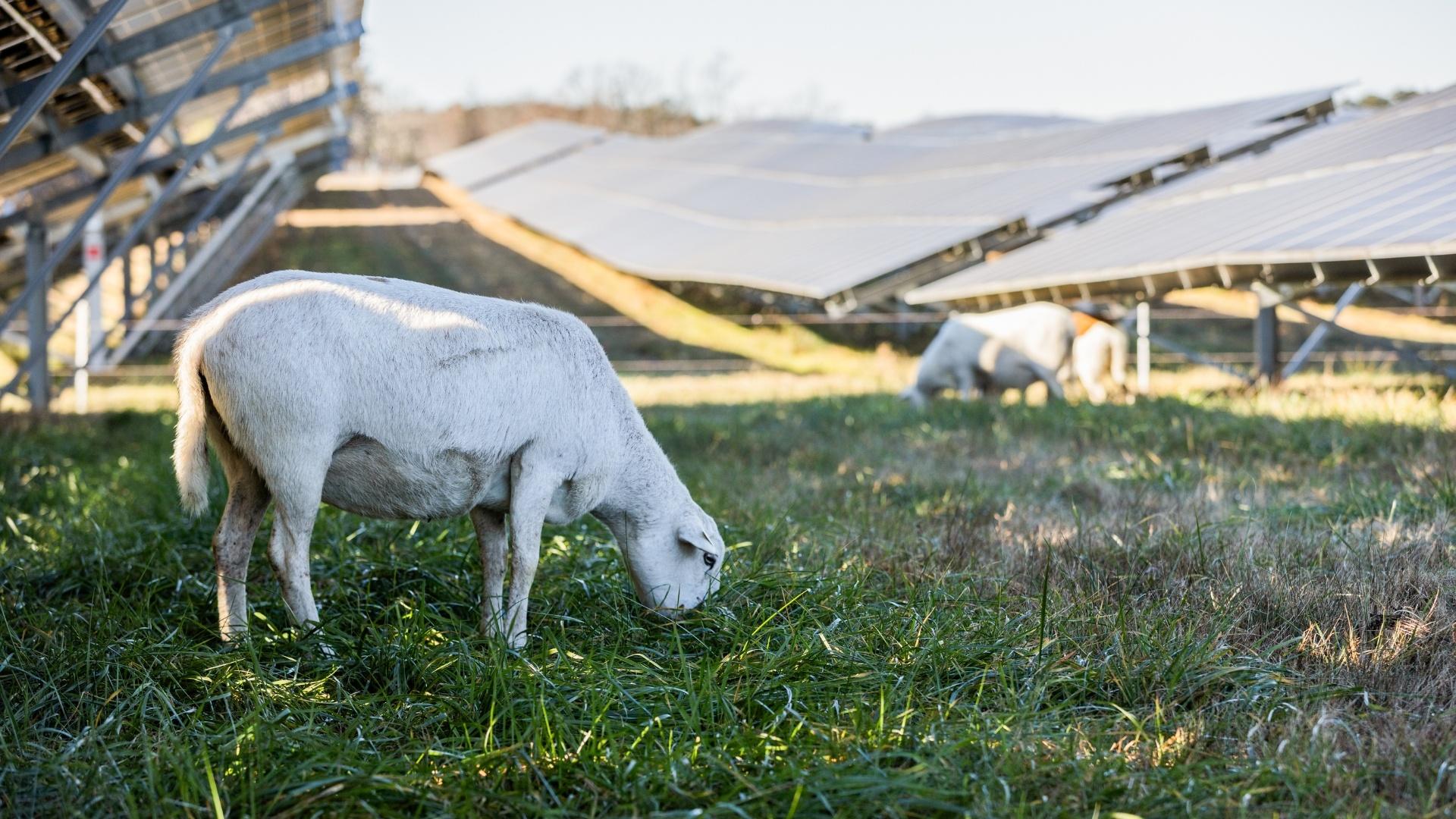
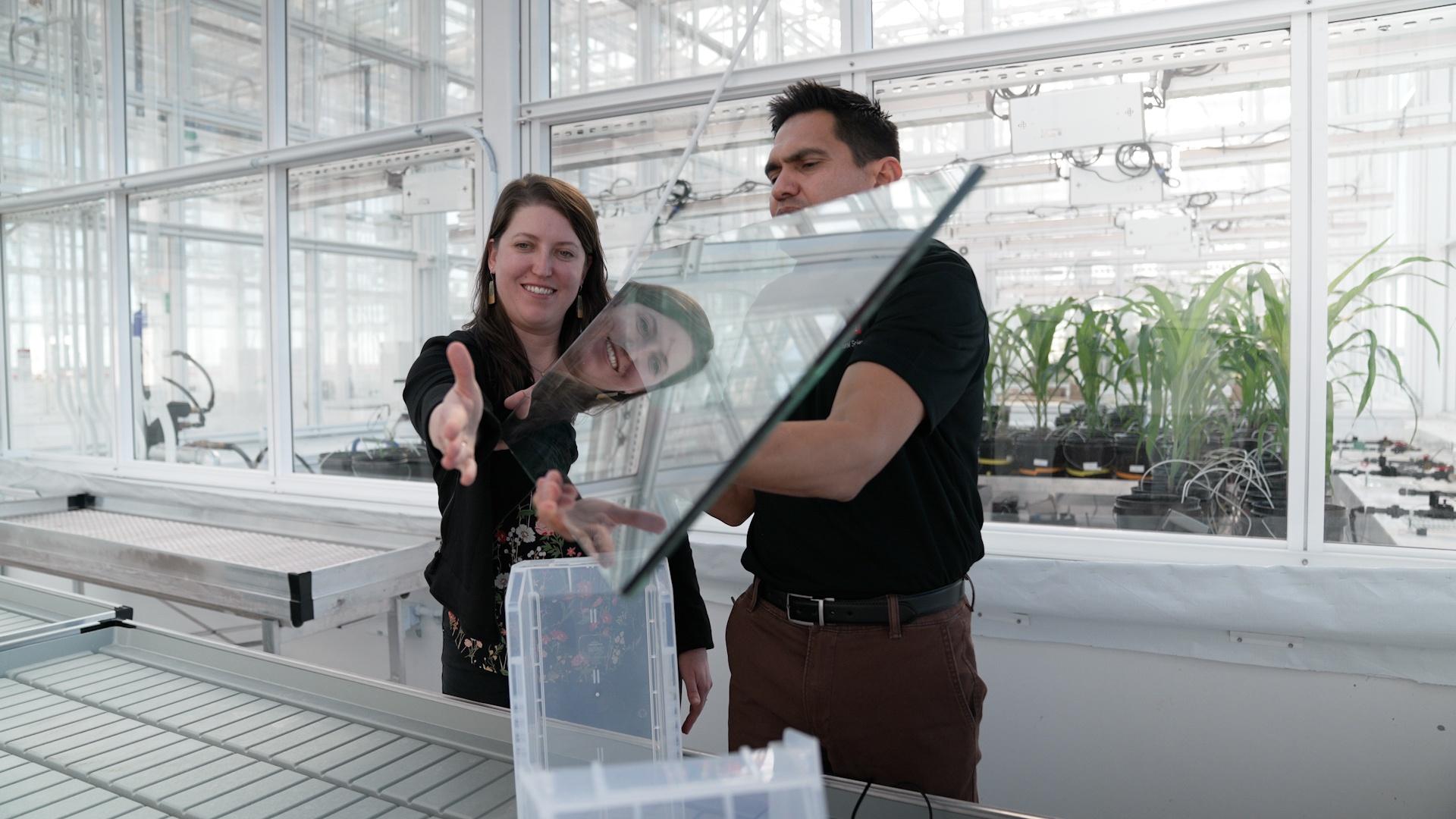
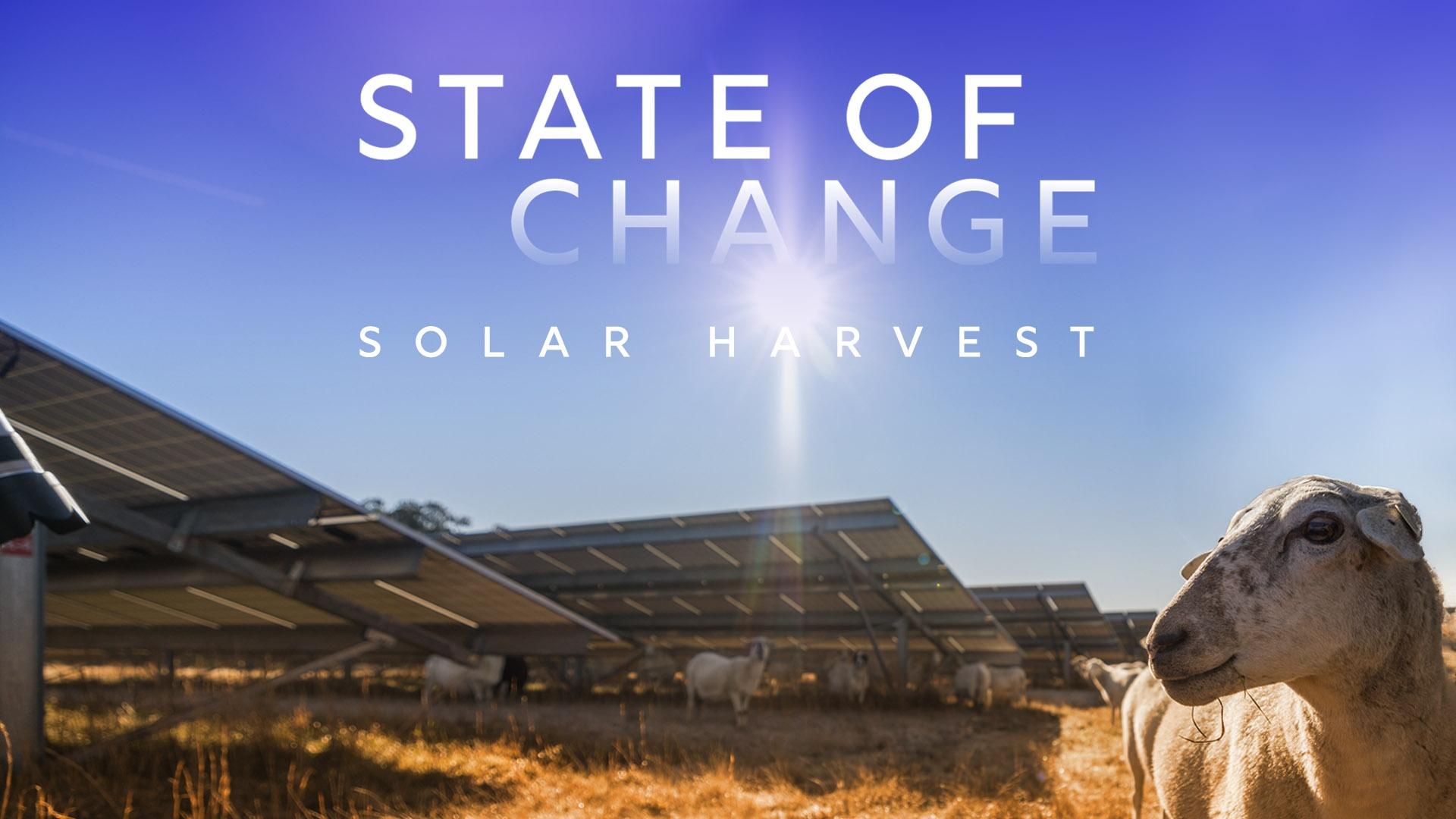
Energy generation is one of the biggest contributors to carbon emissions, so renewable sources like solar are seen as effective options for reducing our carbon footprint. However, land that’s ideal for solar installations is also prime for farming. Fortunately, we can have both. Find out how North Carolinians are getting creative about how to generate solar energy alongside agriculture.
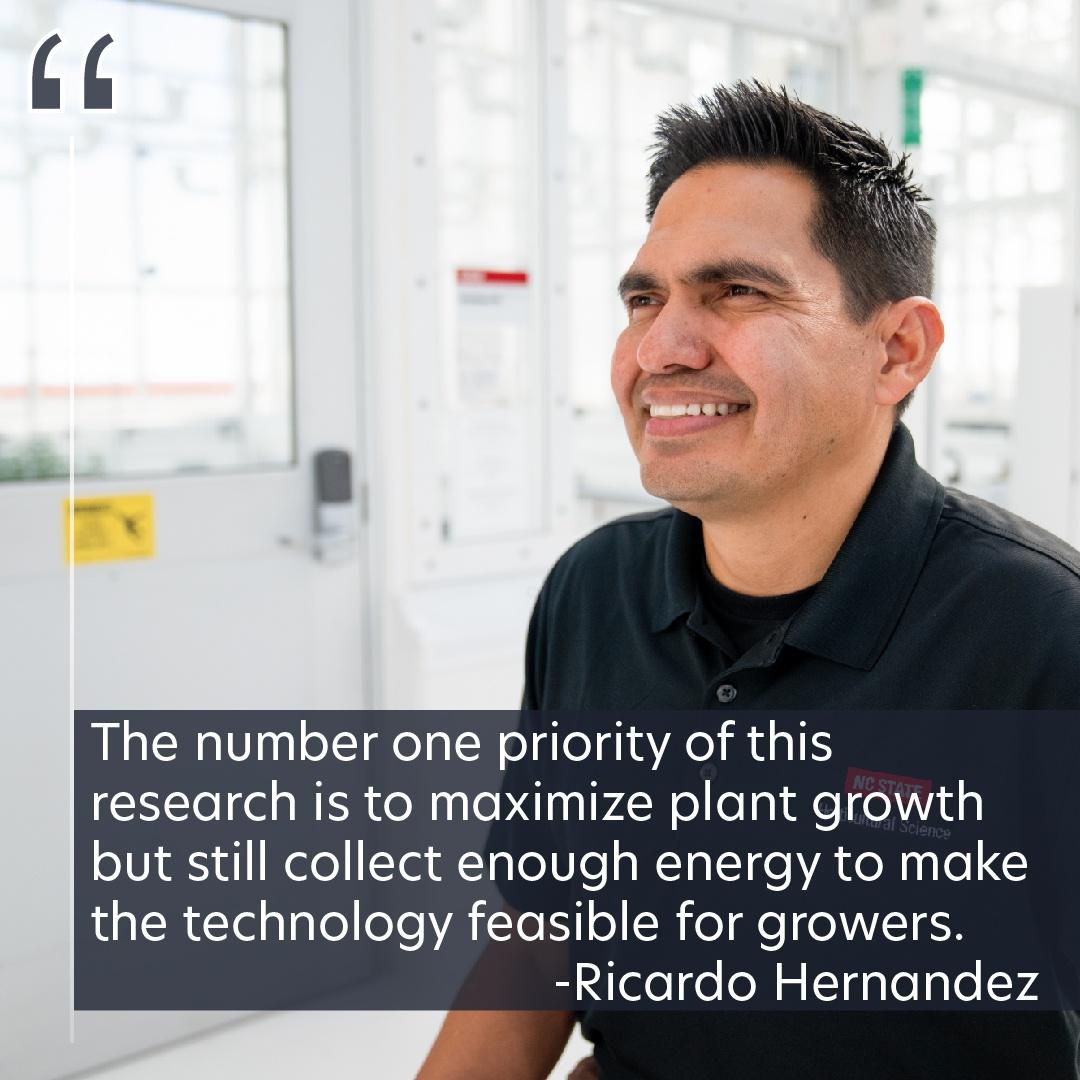
Farmland is being lost to development at an alarming rate. What if solar energy could provide farms with steady revenue and share the field with valuable crops?
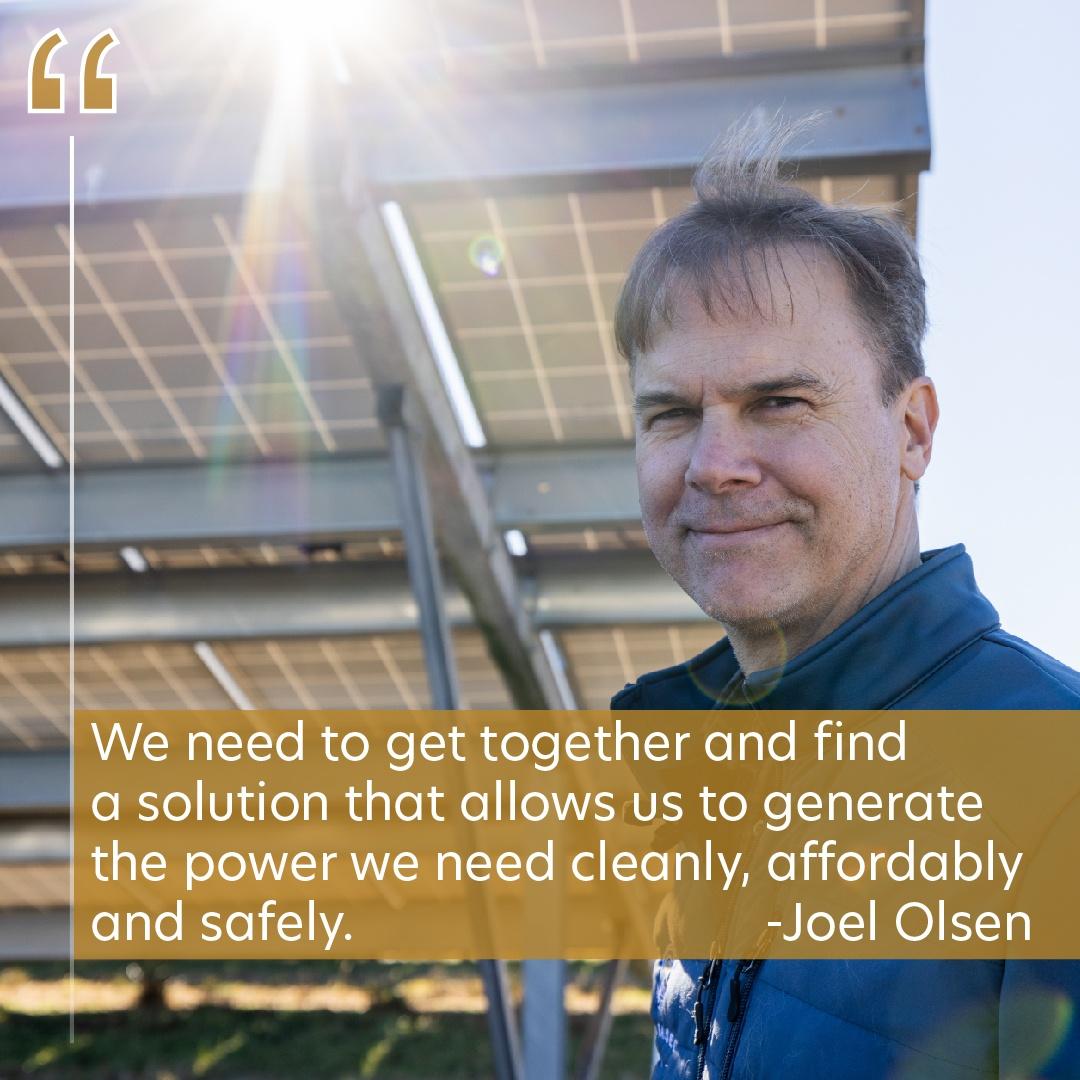
A farm in Biscoe, NC, generates renewable energy while its sheep keep the grass trimmed without gas-powered machinery, a win-win for climate change resilience.
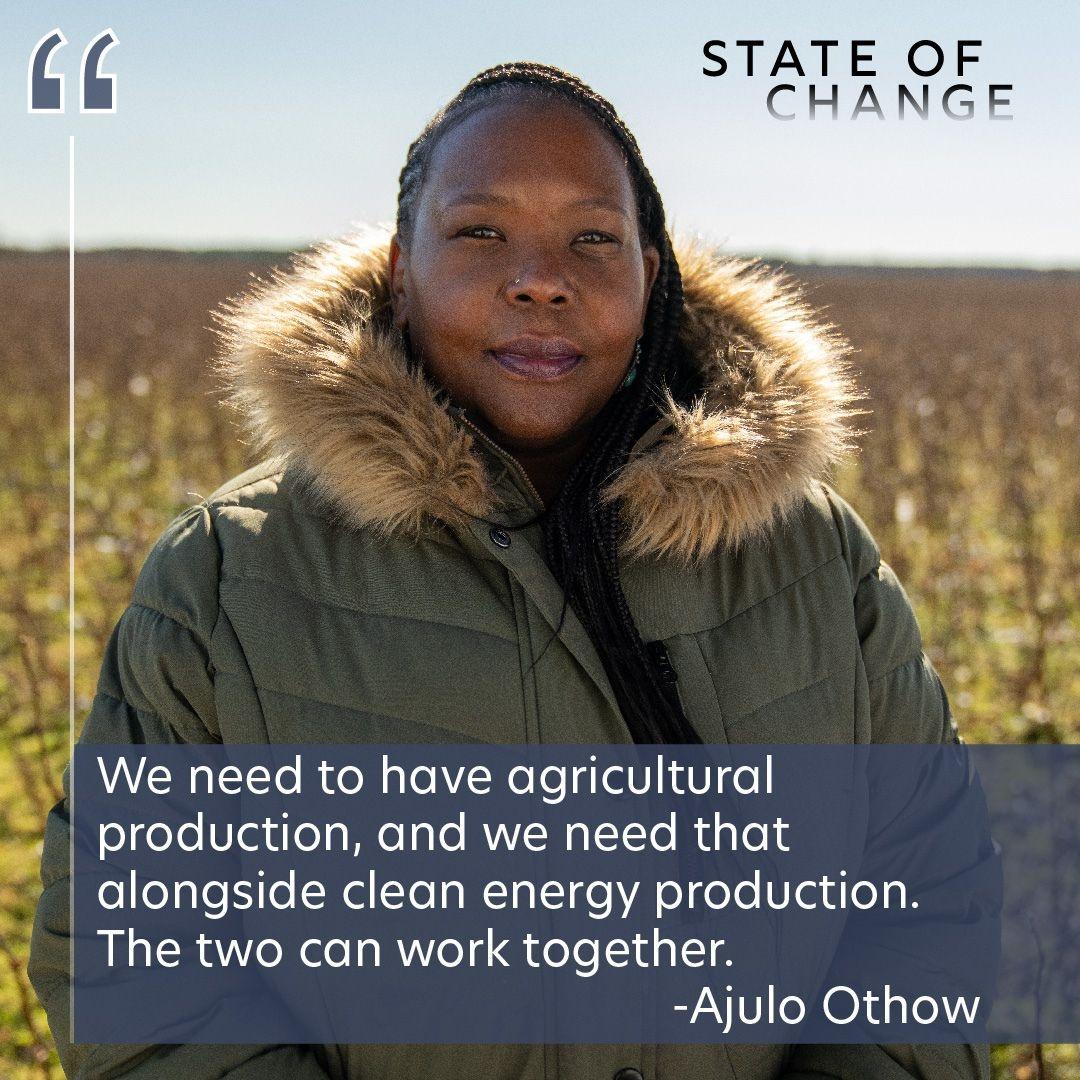
Can farming and solar-energy production coexist? EnerWealth works with farmland owners and energy co-ops to make sure rural communities get a piece of the pie.
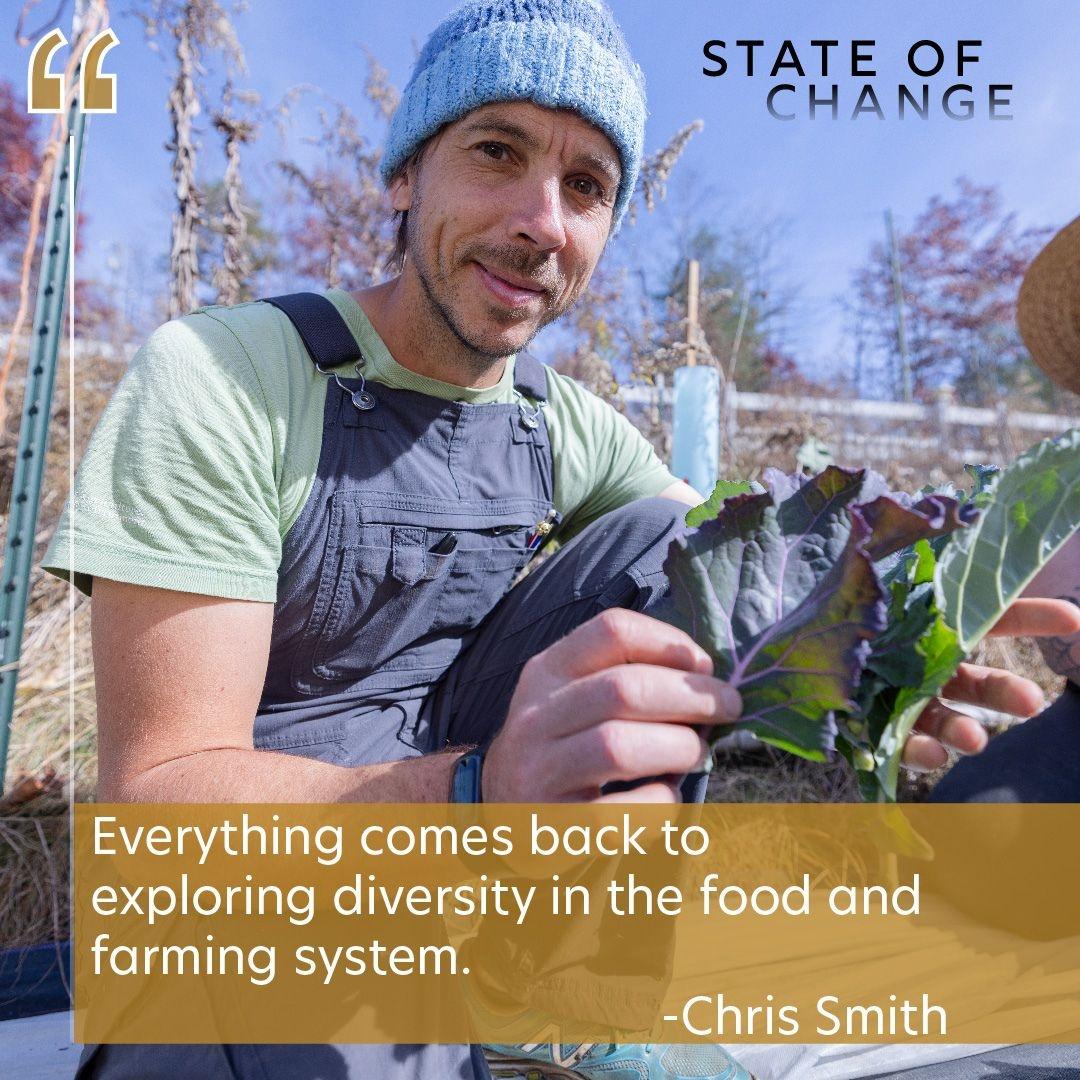
The Utopian Seed Project in western NC is developing regionally adapted varieties of crops and introducing tropical staples to increase resiliency.
STREAM ANYTIME, ANYWHERE
